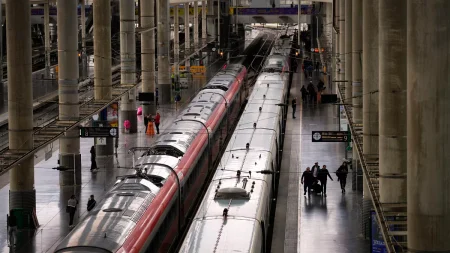Uncertainty Surrounds EU’s New Entry/Exit System at Dover
The European Union’s ambitious new Entry/Exit System (EES) has hit another roadblock, with officials at the Port of Dover announcing a pause in its implementation for tourist vehicles. This digital border control system, designed to enhance security across the Schengen Zone, requires British citizens and other non-EU nationals to submit biometric data including fingerprints and photographs. While the system has already been implemented for coach passengers and freight at Dover since mid-October, car travelers have been granted a temporary reprieve from what could potentially be significant delays. Doug Bannister, the port’s chief executive, clarified that while Dover’s facilities stand ready for the November 1 launch, they await final guidance from French authorities on when to activate the system for car passengers. This development highlights the complex cross-border coordination required between British and European authorities in the post-Brexit era, where simple journeys now involve navigating new international boundaries.
The practical implications of the EES for travelers passing through Dover are considerable. Port officials have previously warned that processing times could increase sixfold, from the current 60-second average per vehicle to substantially longer waits. The new system would require passengers to exit their vehicles to register at electronic kiosks, creating potential bottlenecks at one of Europe’s busiest ports. Bannister has requested a minimum two-week notice period before implementation to allow time for proper traveler communication and installation of appropriate signage. This caution reflects the port’s experience managing previous border disruptions and its understanding of how seemingly small procedural changes can cascade into major delays when multiplied across thousands of daily crossings. The port authorities appear to be walking a delicate line between meeting their obligations to implement new security measures while attempting to minimize disruption to the vital flow of people and goods between Britain and continental Europe.
The EES rollout across Europe has been characterized by a patchwork implementation, reflecting the massive logistical challenge of introducing new technology at hundreds of border points across the continent. While officially launched on October 12, the system has only been activated at select airports within the EU, with full operational status not required until April 10 of next year. This gradual approach aims to give countries time to install the necessary technology and prepare travelers for the new requirements. However, this phased introduction has created confusion among both travelers and industry professionals about where and when the system applies. Tom Jenkins, chief executive of the European travel association Etoa, has described the situation as a “complete muddle,” highlighting the lack of clear communication from European authorities. The confusion stems partly from the challenge of introducing a comprehensive digital system while maintaining existing passport control measures during the transition.
The uncertainty surrounding the EES has already begun affecting travel patterns, according to research by Holiday Extras. Their survey revealed that 82 percent of respondents remained unclear about how the new system would impact their journeys, with more than a third unaware that the rules had already come into effect in October. Perhaps most concerning for the travel industry, nearly 20 percent of potential holidaymakers reported changing or cancelling travel plans specifically due to concerns about border delays resulting from the new system. Travel industry leaders like Julia Lo Bue-Said, chief executive of the Advantage Travel Partnership, are advising travelers to allow three to four hours to navigate the new checks, particularly at busy transportation hubs where multiple arrivals could create significant bottlenecks. This represents a substantial change in the travel experience for British tourists who, prior to Brexit, enjoyed relatively seamless movement across European borders.
The situation at Dover exemplifies the broader challenges of implementing sophisticated border control technologies in physical spaces that weren’t originally designed for such procedures. Unlike airports, where passengers expect to navigate various security and immigration protocols, ferry ports like Dover were optimized for vehicular flow with minimal passenger processing. Retrofitting these spaces with biometric capture capabilities presents unique challenges. The EES requires physical interaction with technology – fingerprints must be scanned, photographs taken – which necessitates passengers exiting their vehicles, creating logistical hurdles at facilities designed primarily as drive-through checkpoints. The Port of Dover has invested in preparing its infrastructure, but the requirement for French border authorities to operate the system adds another layer of complexity to an already challenging implementation. The situation highlights how border technologies developed with air travel in mind can create unforeseen complications when applied to other transportation modes.
Beyond the immediate operational concerns, the EES implementation represents a significant shift in how Europeans conceptualize borders and freedom of movement in the post-Brexit era. For decades, British travelers enjoyed the privilege of relatively frictionless travel throughout Europe, with minimal documentation requirements and quick passport checks. The introduction of biometric border controls signals a more formal, digitized relationship between the UK and its European neighbors. While proponents argue these measures enhance security and provide better tracking of who enters and exits the Schengen Zone, critics worry about privacy implications and the potential for creating new barriers to cultural exchange and tourism. As the system continues its gradual rollout across Europe’s borders, both travelers and border authorities will need to adapt to this new reality where crossing borders involves not just document checks but digital identity verification. The confusion and delays at Dover may be temporary growing pains in a longer transition to a more technologically sophisticated – though potentially less spontaneous – era of European travel.











